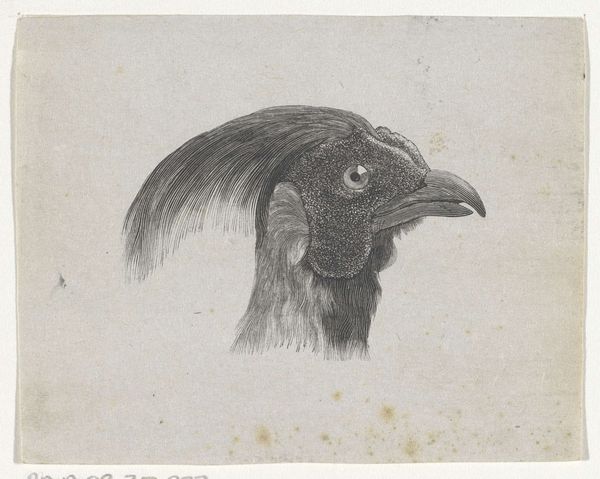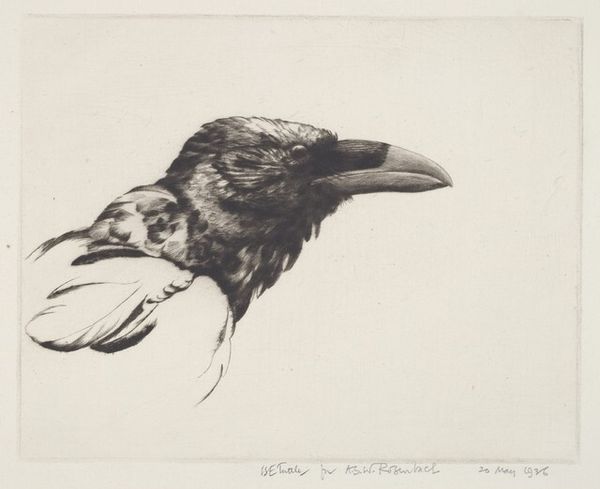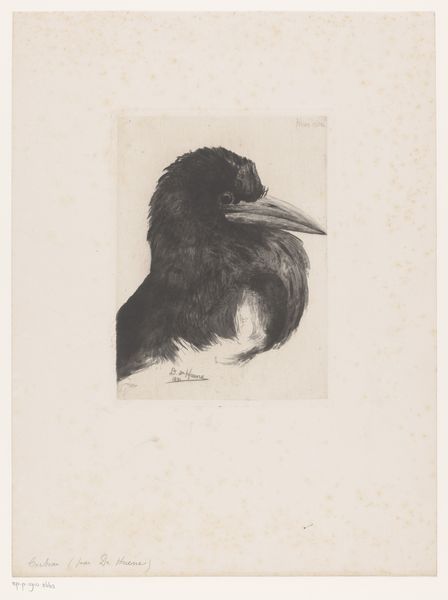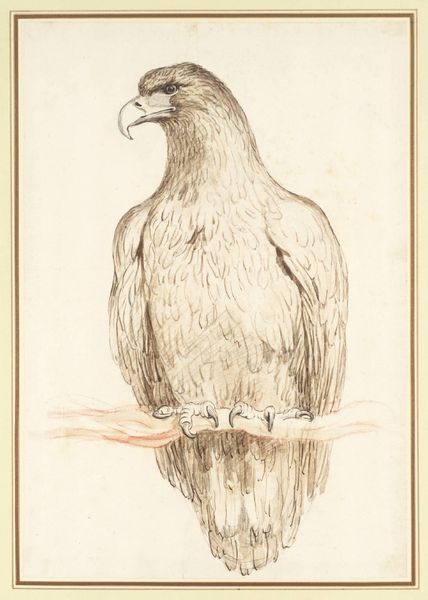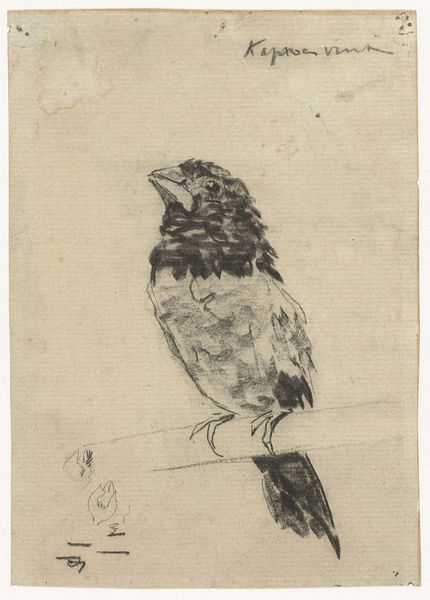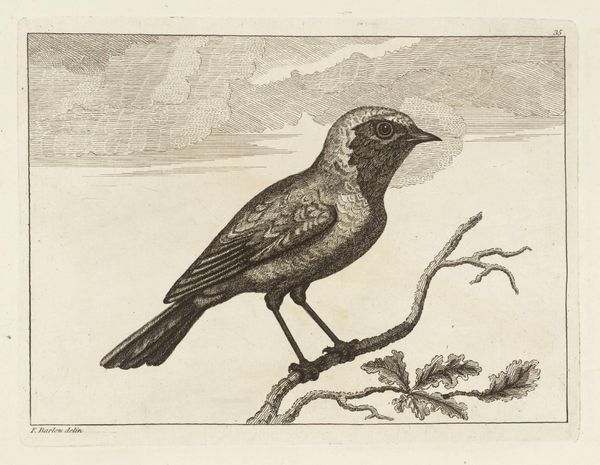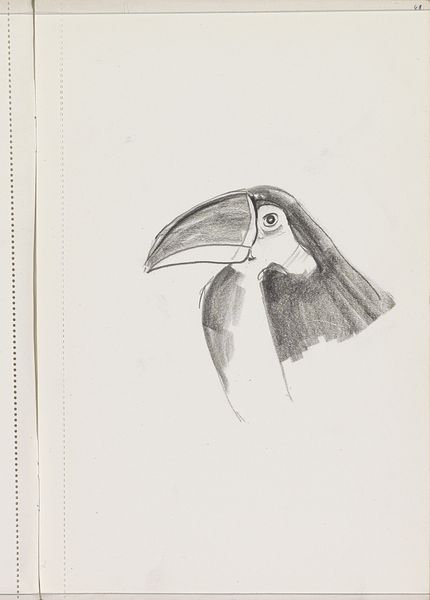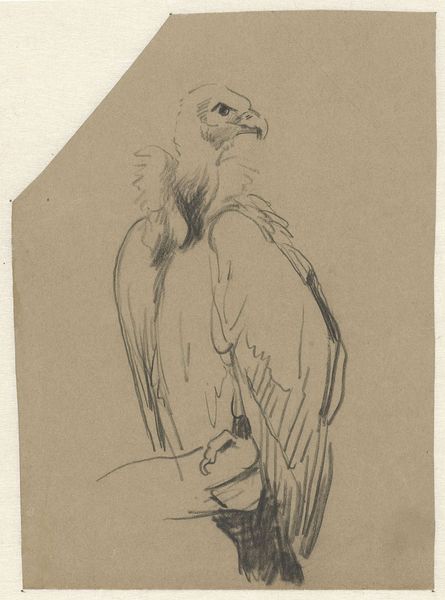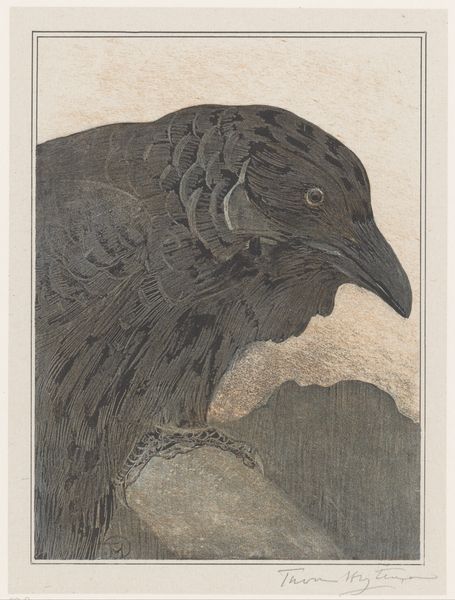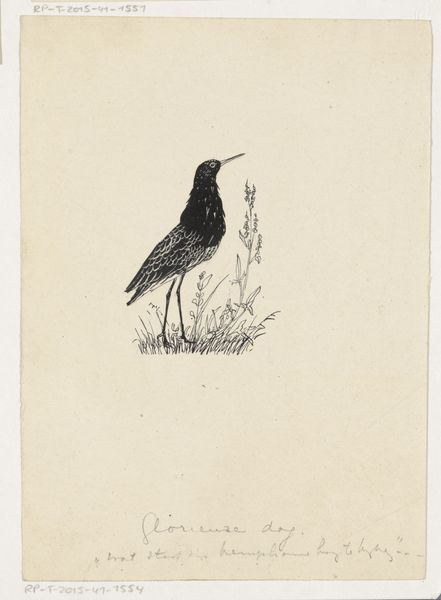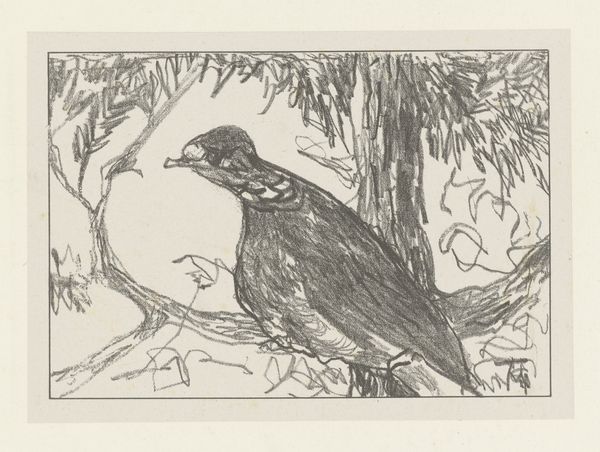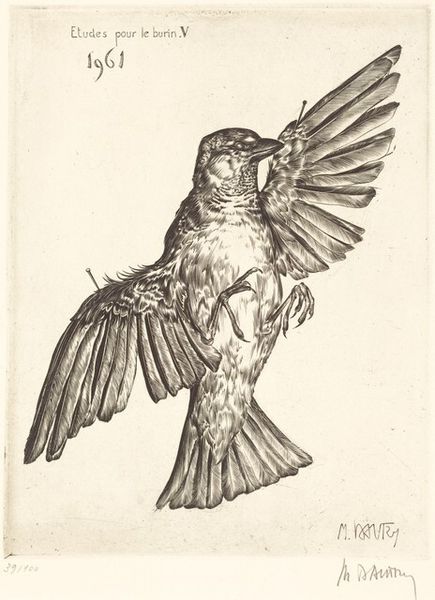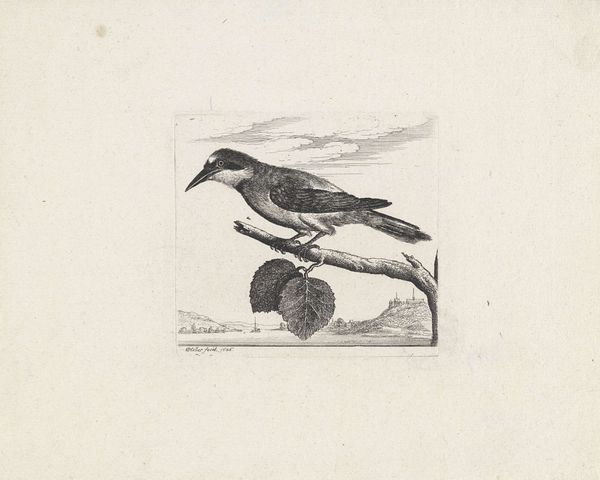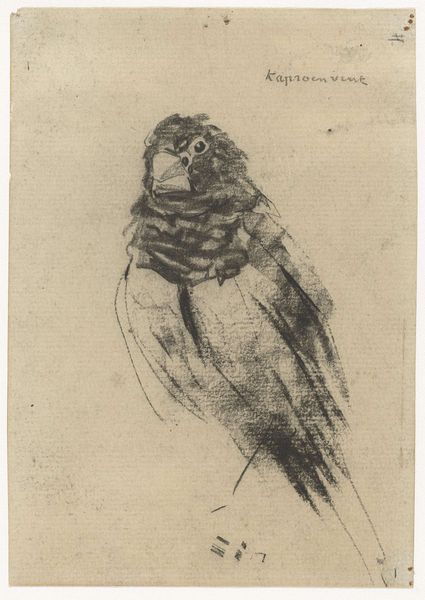
drawing, pencil
#
portrait
#
pencil drawn
#
drawing
#
pencil sketch
#
bird
#
pencil drawing
#
pencil
#
realism
Dimensions: height 55 mm, width 71 mm
Copyright: Rijks Museum: Open Domain
Curator: Let's examine this delicate drawing titled "Vogelkop (mogelijk een groenling of een appelvink)" by Evert Schippers. Its creation is situated sometime between 1856 and 1935. Editor: The precision is striking. Look at how the fine pencil strokes define the textures and shadows, almost as if the artist aimed to capture not just the form, but the essence of this bird. The tilted head makes it seem almost inquisitive. Curator: I'm drawn to the inherent labor invested in such detail. We can consider the accessibility of materials; pencil and paper as relatively democratic tools available across a certain swathe of society. This piece challenges hierarchies present in the art world, emphasizing craft, production, and the democratization of art-making processes. Editor: That’s interesting. I see something more in the artist's careful rendering of this avian creature: perhaps an attempt to come to terms with a rapidly changing world, particularly regarding species under threat and environmental degradation through rampant urbanization during the long 19th century? The piece gives a melancholic nod to conservation and lost habitats. Curator: And in whose hands was this drawing circulated? The means of dissemination impacts its social impact, which connects directly to labor and material costs related to producing multiple copies and distributing them. Perhaps for teaching, ornithological reference, or purely aesthetic enjoyment by an educated patron class. Editor: Agreed. Beyond the materiality, Schippers captures the bird's almost quizzical gaze. The work encourages viewers to consider broader themes like freedom, confinement, or ecological vulnerability in a world reshaped by humans. Curator: By observing these marks—the hand of the artist laid down on the paper—we expose artistic methods as work, both physically taxing and socially situated within production structures. Editor: Reflecting on it, perhaps its humble form encourages more contemplation about environmental themes and how we relate with non-human lives than many grand oil paintings. It is a potent reminder that thoughtful art doesn’t require monumental scale.
Comments
No comments
Be the first to comment and join the conversation on the ultimate creative platform.
